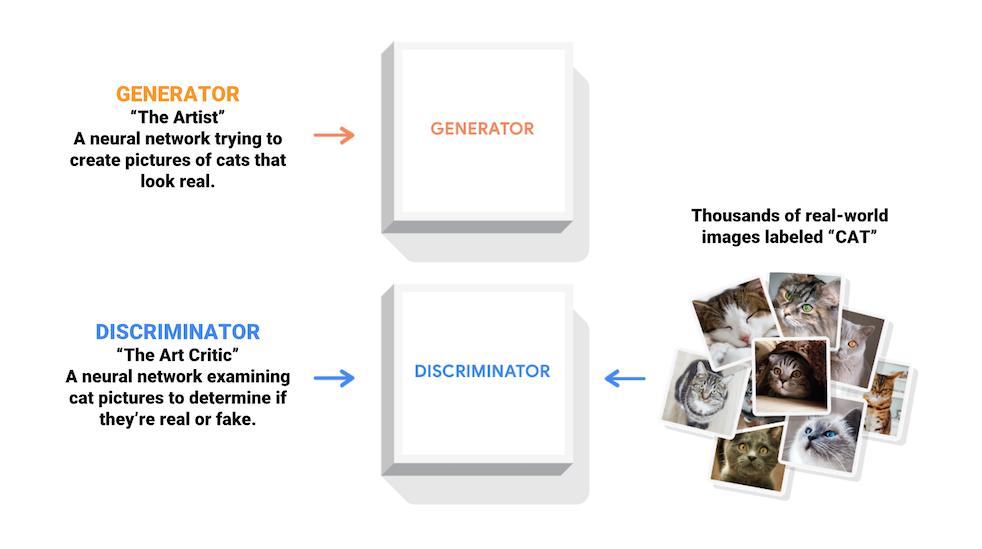Modular Neural Network
(Redirected from modular neural network)
Jump to navigation
Jump to search
A Modular Neural Network is a Artificial Neural Network that is composed by modules which are also neural networks.
- Example(s):
- Counter-Example(s):
- See: Recurrent Neural Network, Convolutional Neural Network, LSTM Network, Gated Recurrent Neural Network, Feedforward Neural Network.
References
2020
- (TensorFlow, 2020) ⇒ https://www.tensorflow.org/tutorials/generative/dcgan Retrieved:2020-11-29.
- QUOTE: Generative Adversarial Networks (GANs) are one of the most interesting ideas in computer science today. Two models are trained simultaneously by an adversarial process. A generator ("the artist") learns to create images that look real, while a discriminator ("the art critic") learns to tell real images apart from fakes.

During training, the generator progressively becomes better at creating images that look real, while the discriminator becomes better at telling them apart. The process reaches equilibrium when the discriminator can no longer distinguish real images from fakes.
- QUOTE: Generative Adversarial Networks (GANs) are one of the most interesting ideas in computer science today. Two models are trained simultaneously by an adversarial process. A generator ("the artist") learns to create images that look real, while a discriminator ("the art critic") learns to tell real images apart from fakes.
2018
- (Saxena, 2018) ⇒ Rohan Saxena (April, 2018). "What is an Encoder/Decoder in Deep Learning?". In: Quora.
- QUOTE: Some network architectures explicitly aim to leverage this ability of neural networks to learn efficient representations. They use an encoder network to map raw inputs to feature representations, and a decoder network to take this feature representation as input, process it to make its decision, and produce an output. This is called an encoder-decoder network. ...
In a CNN, an encoder-decoder network typically looks like this (a CNN encoder and a CNN decoder):
Image Credits: (Badrinarayanan et al., 2017)
- QUOTE: Some network architectures explicitly aim to leverage this ability of neural networks to learn efficient representations. They use an encoder network to map raw inputs to feature representations, and a decoder network to take this feature representation as input, process it to make its decision, and produce an output. This is called an encoder-decoder network.
2017
- (Vezhnevets et al., 2017) ⇒ Alexander Sasha Vezhnevets, Simon Osindero, Tom Schaul, Nicolas Heess, Max Jaderberg, David Silver, and Koray Kavukcuoglu. (2017). “FeUdal Networks for Hierarchical Reinforcement Learning.” In: Proceedings of the 34th International Conference on Machine Learning (ICML2017).

|
----